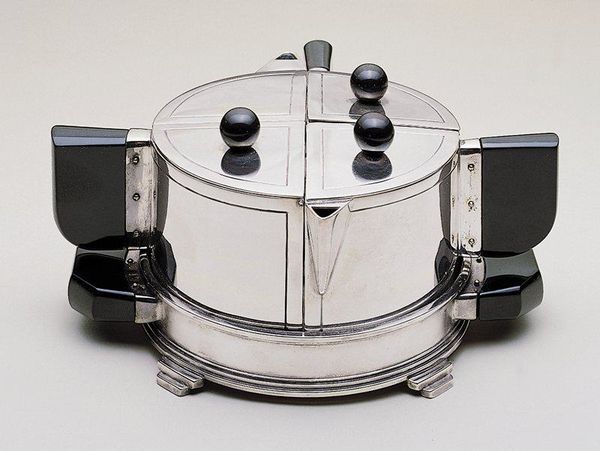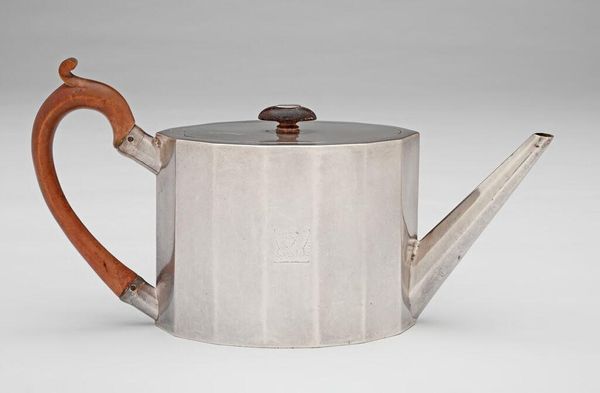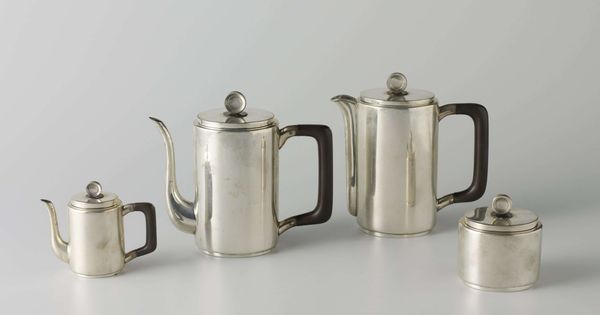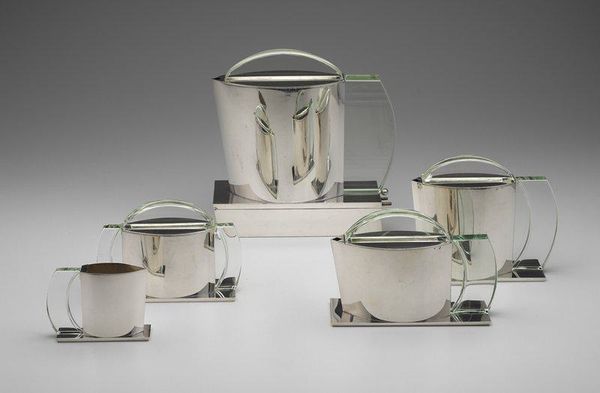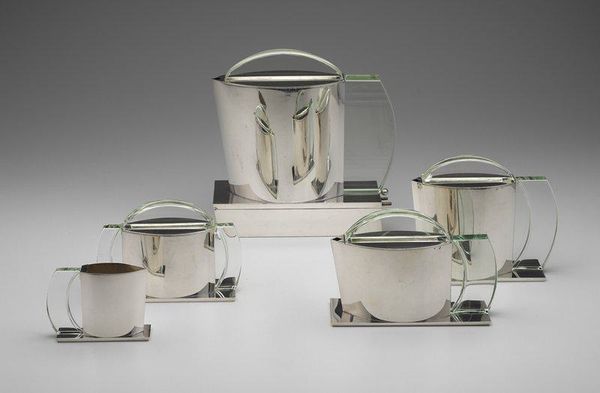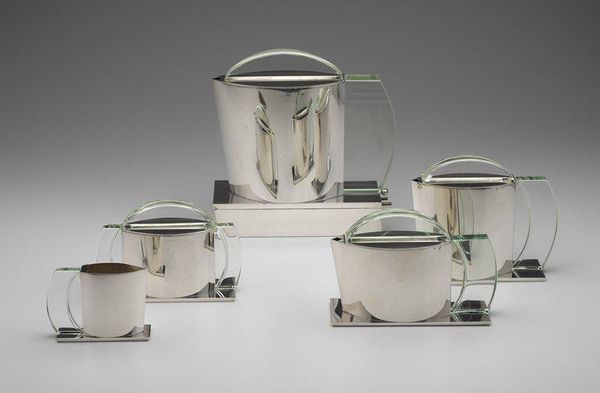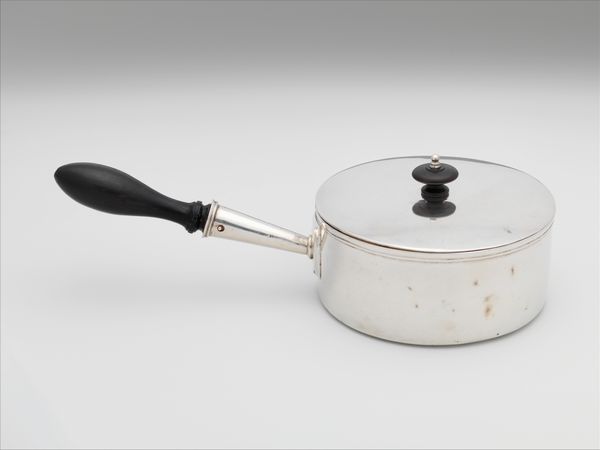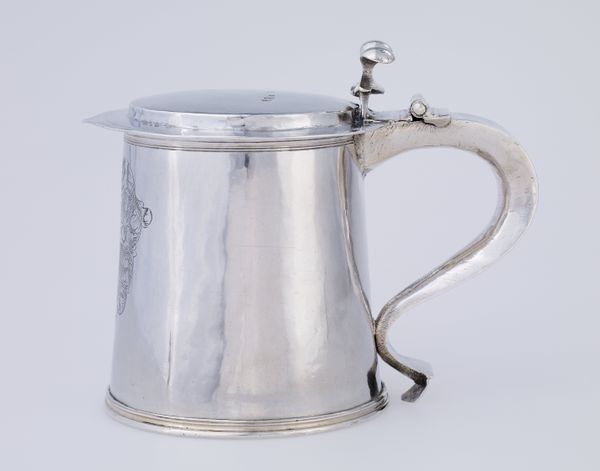
silver, ivory
#
silver
#
decorative-art
#
ivory
Copyright: Public Domain
Curator: Here we have a silver sugar bowl, likely dating to the 1930s, and on display at the Minneapolis Institute of Art. It’s quite striking in its simplicity. Editor: Austere is the first word that comes to mind. The hard, reflective silver surfaces against the off-white, rectangular ivory knob create a sharp contrast, wouldn't you say? The pure geometric form is almost severe. Curator: I'm inclined to agree. These sorts of refined tablewares arose, as we well know, from a context steeped in changing social norms. With afternoon tea rising in popularity, it reflected the emergent rituals surrounding it. The elite's pursuit of elevated tastes led to the desire to produce artworks such as these. Editor: Exactly. And structurally speaking, notice how the rectangular forms repeat throughout each component: the body, the lid, even the ivory knob. The minimal embellishments only heighten this sense of purified geometry, though softened somewhat by rounded edges. Curator: I find it fascinating how designers of the period grappled with these mass-produced objects, attempting to elevate them through material and form, as seen in this instance through the use of ivory on the silver bodies. This approach echoes similar sentiments among certain architecture circles from the interwar years. Editor: Absolutely. These shapes certainly resonate with a modernist ethos, an embrace of the industrial age aesthetic, however softened for the bourgeois home. And it encourages a shift in perspective toward the art. Is its existence purely pragmatic or, given its carefully rendered form, does it also take on sculptural qualities? Curator: An interesting paradox. Such silverware embodied a desire to reconcile the machine-made with a longing for handmade elegance. So the form follows function, but with artistic intent, one could say. What initially seems stark quickly becomes quite rich with the understanding of the object's environment, as well as careful examination. Editor: I think this "Sugar bowl," reveals quite a bit about a historical push-and-pull between mechanization and artistry, while also inviting us to consider, above all, its underlying composition, structure, and geometric elegance. Curator: Indeed. And a good point, ultimately highlighting art’s connection to the societal forces. Thank you.
Comments
No comments
Be the first to comment and join the conversation on the ultimate creative platform.


